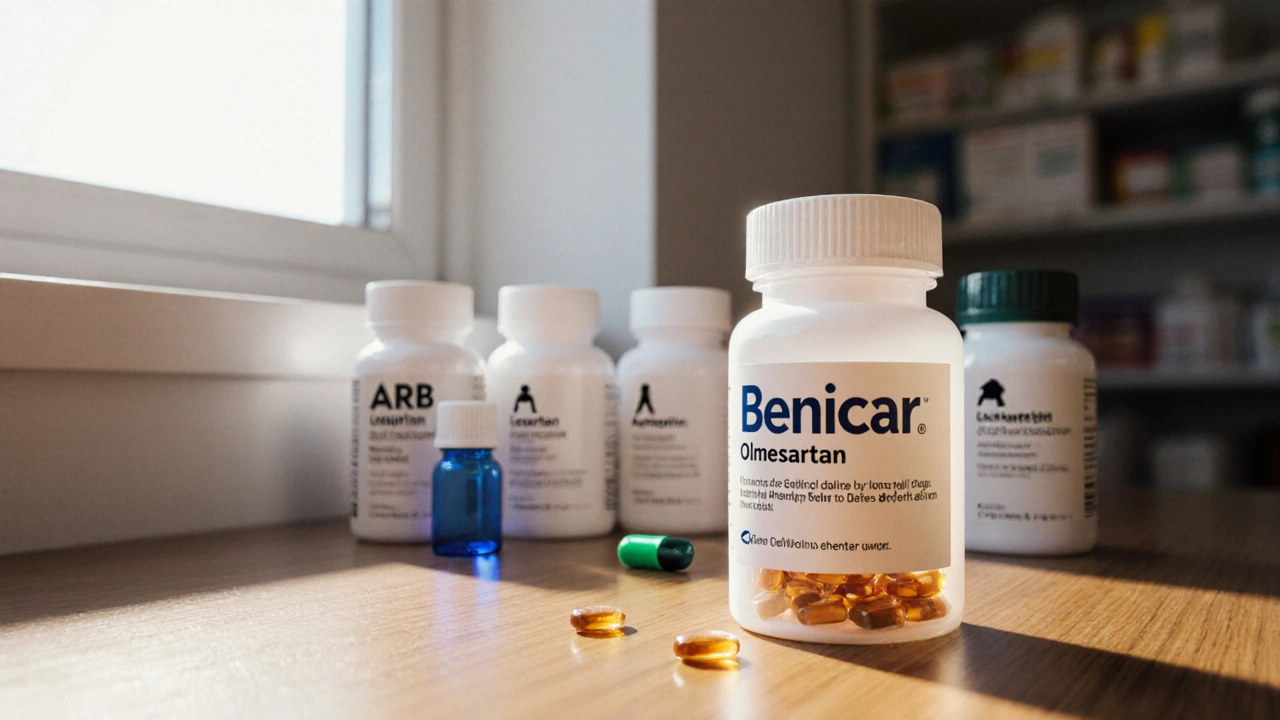
Benicar (Olmesartan) vs. Other Blood Pressure Drugs: A Detailed Comparison
A clear side‑by‑side comparison of Benicar (Olmesartan) with common hypertension drugs, covering mechanisms, dosing, side effects, cost, and best‑fit scenarios.
When talking about ARB vs ACE, the comparison between angiotensin II receptor blockers and angiotensin‑converting enzyme inhibitors, two major classes of blood‑pressure medicines. Also known as ARB‑ACE showdown, this topic matters to anyone managing hypertension, high blood pressure that raises the risk of heart attacks and strokes, treating heart failure, a condition where the heart can’t pump enough blood to meet the body’s needs, or protecting kidney disease, damage to the kidneys often worsened by high blood pressure. Understanding the side‑effects, common unwanted reactions like cough or dizziness that can influence drug choice is also key. In short, the ARB vs ACE debate influences how clinicians control blood pressure, preserve organ health, and improve quality of life.
The first thing to know is how each class works. ACE inhibitors block the enzyme that converts angiotensin I to angiotensin II, lowering the hormone that narrows blood vessels. ARBs, on the other hand, stop angiotensin II from binding to its receptors, achieving a similar blood‑vessel‑relaxing effect without touching the enzyme. This subtle difference shapes side‑effect profiles: ACE inhibitors often cause a dry cough, while ARBs rarely do. For patients who can’t tolerate that cough, many doctors switch to an ARB.
Second, look at the evidence for specific conditions. In hypertension, both classes lower blood pressure by about the same amount, so the choice often comes down to tolerance and cost. In heart failure, large trials showed both ACE inhibitors and ARBs reduce hospitalizations and improve survival, but ACE inhibitors have a longer track record; ARBs are usually reserved when ACE therapy isn’t tolerated. For chronic kidney disease, especially with diabetic patients, ACE inhibitors and ARBs both slow the loss of kidney function, yet combining them isn’t recommended due to higher risk of kidney injury.
Third, consider patient‑specific factors such as age, pregnancy status, and other meds. ACE inhibitors are contraindicated in pregnancy because they can harm the fetus, while ARBs share the same warning. Elderly patients sometimes need lower doses to avoid low blood pressure. Drug interactions matter too: both classes interact with potassium‑sparing diuretics, raising potassium levels, which can be dangerous if not monitored.
Finally, cost and accessibility play a role. Generic ACE inhibitors have been cheap for decades, while many ARBs only recently became widely available as generics. Insurance formularies may favor one over the other, nudging patients toward the cheaper option unless a clear clinical reason exists to choose otherwise.
All these pieces—mechanism, condition‑specific data, patient factors, and price—form the puzzle that clinicians solve every day. Below you’ll find a handful of articles that dive deeper into each aspect, from side‑effect management to real‑world price comparisons. Whether you’re a patient trying to understand why your doctor switched your prescription, or a caregiver looking for clear information, the collection ahead should give you practical, easy‑to‑apply insights.

A clear side‑by‑side comparison of Benicar (Olmesartan) with common hypertension drugs, covering mechanisms, dosing, side effects, cost, and best‑fit scenarios.